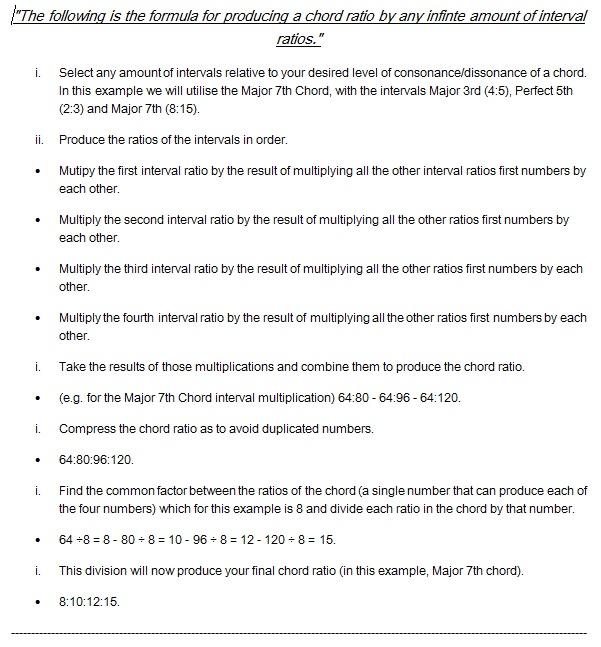-
Posts
17 -
Joined
-
Last visited
About Seery

- Birthday 01/09/1992
Profile Information
-
Biography
I'm a 27 year old Capricorn from Europe. I've been involved in music production for 7 years and i am on a path of studying music through its purest form, physics and math.
-
Gender
Male
-
Location
European
-
Occupation
Music Producer
-
Interests
Music, Mixed Martial Arts, Self Development, Business, Podcasts and Cannabis
-
Instruments Played
Keyboard
Recent Profile Visitors
255 profile views
Seery's Achievements
-
Just heard the piece. Its extraordinarily composed, by making the significant consistent dissonance so beautiful to hear. I'd go as far as to say that i can enjoy this style of composition just as much or slightly more (depending on my current mood) than regular music but at the same time i gravitate towards dissonance in many aspects of life. The section at 2:25 where it builds up is very beautiful. I'll listen to more of this dissonant counterpoint music.
-
I cant listen to the audio now but I'll check it shortly. Most if not everybody has said to me that consonance/dissonance is subjective but I'm set on the logic that pitches in their purest source are sound waves and when two pitches sound waves crests align frequently, they are in harmony and produce consonance and when their crests dont align that much they produce beating which is dissonance. So with that being said, I can understand that people can enjoy bland food or spicy food but in my mind the fact that they're bland or spicy still remains regardless of taste preference. I wish to produce music from science and not cultural taste or expectations.
-
This stems from my work the last few months regarding producing music from physics as opposed to more "conventional" forms. I wanted to learn how to build chords from interval ratios as to give me the position to dictate a chords desired level of consonance/dissonance. I got quite a bit of backlash from far older musicians than myself at the start of approaching composition this way but as I've progressed with the research, I've gotten positive feedback and aroused their curiosity towards this approach. Thank you for your patience and knowledge.
-
So the math regarding the presence of the minor 3rd as i described is correct? Here is the formula simplified.
-
In the math it says the 10:12 stems from the B and C which pertain to the Maj 3rd and Perfect 5th. I guess in the B of 4:5 the B represents the note E and the 4 is note C (root). In the C of 2:3, the 3 represents the note G and the 2 is note C (root). Between E and G is a minor 3rd. Is this what you're describing? Major 7th Chord Ratios: 4:5, 2:3, 8:15 A1 = 4 B = 5 A2 = 2 C = 3 A3 = 8 D = 15 (A1 x (A2 x A3)): 4 x (16) = 64 (B x (A2 x A3)): 5 x (16) = 80 (A2 x (A1 x A3)): 2 x (32) = 64 (C x (A1 x A3)): 3 x (32) = 96 (A3 x (A1 x A2)): 8 x (8) = 64 (D x (A1 x A2)): 15 x (8) = 120 64:80, 64:96, 64:120 Merge: 64:80:96:120 Common factor: 8 64/8 = 8 80/8 = 10 96/8 = 12 120/8 = 15 Combined Ratio: 8:10:12:15
-
I appreciate your explanation but i will tell you that although i may appear to have a decent amount of knowledge revolving around this, it is bits and pieces, so i get lost. If i understand what you're saying, the ratio for the minor 3rd is present in the chord ratio of 8:10:12:15. I guess my follow up question is, where is the minor 3rd ratio involved in the math? Again, i need the explanation to be detailed as i don't have the sufficient knowledge to understand your current explanation.
-
Could you elaborate on this as i don't quite understand it and it would be of great help to understand? So even though they are duplicated, it's not accounted for in the chord ratio because they're the same interval, which as a result signifies that duplicate intervals are as good as single intervals? Thanks.
-
Seery started following What exactly are interval class vectors? and Missing intervals in chord ratios?
-
Good hour folks, Here are a selection of chord ratios.. Minor Chord - 10:12:15 Root (1:1) - Major 3rd (4:5) - Perfect 5th (2:3) Major 7th Chord - 8:10:12:15 Root (1:1) - Major 3rd (4:5) - Perfect 5th (2:3) - Major 7th (8:15) Major 9th Chord - 8:10:12:15:18 Root (1:1) - Major 3rd (4:5) - Perfect 5th (2:3) - Major 2nd (8:9) - Major 9th (8:18/4:9) If we look at the Major 7th Chord.. according to the chord ratios, it holds the intervals Major 3rd, Perfect 5th and Major 7th. But yet, there are more intervals within the Major 7th than what the chord ratio 8:10:12:15 represents. The intervals are the following.. Major 3rd - C - E - (4:5) Perfect 5th - C - G - (2:3) Major 7th - C - B - (8:15) Minor 3rd - E - G - (5:6) Perfect 5th - E - B (2:3) Major 3rd - G - B - (4:5) Why are those intervals not represented in the chord and it's ratios? By those intervals not being included in the chord ratio, does that make the chord ratio inaccurate given that the Major 7th chord holds a Minor 3rd which is not accounted for in the ratio? There are duplicates of the Major 3rd and Perfect 5th, does that make the chord that much dissonant as opposed to if there were only 1 Major 3rd and Perfect 5th? Many thanks guys!
-
Good hour, I posted my first question here recently regarding interval ratios and their relationships. A user here provided me with great responses which within the array of knowledge, she mentioned "interval class vector". I went ahead and did some research on it and it's really begun to intrigue me because i think it can play a significant role in my understanding of music. So far all i understand about it is that it holds 6 interval classes including their inversions.. 1. Minor 2nd/Major 7th 2. Major 2nd/Minor 7th 3. Minor 3rd/Major 6th 4. Major 3rd/Minor 6th 5. Perfect 4th/Perfect 5th 6. Tritone That is absolutely all i know about interval class vectors. I don't understand how it works, what its exact purpose is nor what does it mean. So my question basically is could you kindly and in layman terms explain to me The purpose How it functions and what does it mean for musical composition Thanks guys!
-

Too Much Brass?
Seery replied to Hergusbergus's topic in Incomplete Works; Writer's Block and Suggestions
I think you could have used a more adequate crash, as to me personally it doesn't blend in too well. The only other thing is the higher pitched brass in the background.. It's sustained too long and could do with letting the track breathe. I think because its high pitched, it stands out more in the mix and can be overpowering when its indefinitely sustained. The melody line of the main brass is pretty nice and i love the drum work too sonic wise and rhythmically. -

How to stack intervals when building a chord?
Seery replied to Seery's topic in Composers' Headquarters
Yes I think we would agree C-C#-D and Eb is the maximum dissonance within 4 notes possible -

How to stack intervals when building a chord?
Seery replied to Seery's topic in Composers' Headquarters
I guess if you have a different chord to that of Major 7th which maybe has a duplicate of a minor 2nd and a single tritone, although it has only one duplicate, the more dissonant choice of intervals would sum up to a harsher chord. That can be further analysed if you look at it from a harmonic series/overtone perspective. In fact your explanation revolves around the overtone relationships, just that its stated through way of ratios. So seeing it that way makes much sense to me. Thank you so much and I'll ask here if any other difficulties arise. You've been tremendous help! -

How to stack intervals when building a chord?
Seery replied to Seery's topic in Composers' Headquarters
@Monarcheon So basically, Within the Major 7th chord exist these following intervals, no more and no less? Major 3rd x 2, Perfect 5th x2, Minor 3rd and Major 7th? If this is the case then the ratios within the Major 7th chord are no more and no less than 4:5 x 2, 2:3 x 2, 5:6 and 8:15. which constitutes it's exact level of dissonance. and because of the duplicates in the Major 7th chord of 4:5 x 2 and 2:3 x 2, this duplication of ratios would make this chord more dissonant than a chord that would not have ratio duplicates or at least less than 4 unlike Major 7th? -

How to stack intervals when building a chord?
Seery replied to Seery's topic in Composers' Headquarters
You've wonderfully cleared up all my other points which i appreciate. This last one about stacking intervals all from the root or a note to note basis, is not becoming clear to me. I'll ponder on your response along with additional research. If i have any more questions regarding this post, ill hit you up. Thank you for this. -

How to stack intervals when building a chord?
Seery replied to Seery's topic in Composers' Headquarters
I'm not familiar with this term. Does it represent the chord with the pitches C,C#,D and D#? From my previous research, i understand that Just Intonation is in ratios and 12TET in cents but i was also told that although the two tuning systems are not exact, they're good enough to utilize as reference. That's what you mean right when you say a perfect 5th is not a 3:2 but 700 cents? Understood! Now if i stack the intervals Major 3rd and Perfect 5th relative to the root, that is a Major Chord but if i stack the intervals Major 3rd and i stack the Perfect 5th relative to the E, now that's a Major 7th with the 5th omitted. Same intervals, two different chords. You say that intervals can be stacked through both methods but it seems a mess really as there's two alternatives to one process. Which is the more scientific method if our focus is on harmonic series/overtone relationships?






